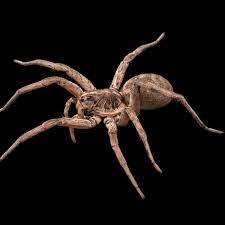Spider Legs: Evolutionary Marvel
The eight-legged creatures known as spiders are fascinating and diverse arachnids that have intrigued humans for centuries. From the smallest jumping spider to the intimidating tarantula, these creatures possess a unique set of features that sets them apart from other organisms. One of the most distinctive characteristics of spiders is their eight legs, a trait that has been perfected over millions of years of evolution. In this article, we delve into the evolutionary and ecological reasons behind the intriguing question: Why do spiders have eight legs?
Evolutionary History of Spiders
Spiders belong to the class Arachnida, which also includes scorpions, ticks, and mites. They evolved from a common ancestor with other arachnids and are thought to have appeared on Earth around 380 million years ago during the Devonian period. Over the course of millions of years, spiders have undergone significant evolutionary changes, resulting in the remarkable creatures we see today.
Reasons Behind Eight Legs
- Efficient Locomotion:
The number of spider legs plays a crucial role in their locomotion and ability to move effectively in their environment. Eight legs provide spiders with greater stability and balance, enabling them to move gracefully across various surfaces, whether it's vertical walls, ceilings, or intricate webs. Having more than four legs allows them to distribute their weight evenly and reduce the risk of tipping over.
- Predator Versatility:
Spiders are primarily predatory creatures, and their eight legs are essential for hunting and capturing prey. The multiple legs provide them with increased agility, allowing them to maneuver with precision and strike quickly when capturing insects and other small creatures in their webs or during direct encounters.
- Web Weaving:
The vast majority of spiders are web-building arachnids, and their unique ability to spin intricate webs has made them successful predators. Eight legs provide spiders with the perfect combination of flexibility and strength needed to construct elaborate and sturdy webs, which vary greatly depending on the species and their prey.
- Sensory Perception:
Each spider leg is covered in numerous specialized hairs and sensory receptors that enable them to perceive their surroundings in incredible detail. This heightened sensory perception allows spiders to detect even the slightest vibrations in their webs, helping them locate prey, avoid predators, and communicate with potential mates.
- Reproductive Success:
The reproductive success of spiders is often linked to their ability to find mates efficiently. Eight legs allow male spiders to dance and display intricate courtship rituals, increasing their chances of attracting a female. Additionally, female spiders use their legs to communicate with potential mates and, in some cases, to protect their eggs and young.
Conclusion
Spiders have managed to survive and thrive on our planet for millions of years due to their unique adaptations, and their eight legs have played a pivotal role in their evolutionary success. The combination of efficient locomotion, predator versatility, web weaving capabilities, sensory perception, and reproductive advantages has made them formidable and intriguing creatures.
Next time you come across a spider, take a moment to appreciate the marvel of nature that stands before you. The eight-legged arachnid is a testament to the wonders of evolution and the extraordinary diversity of life on Earth.


